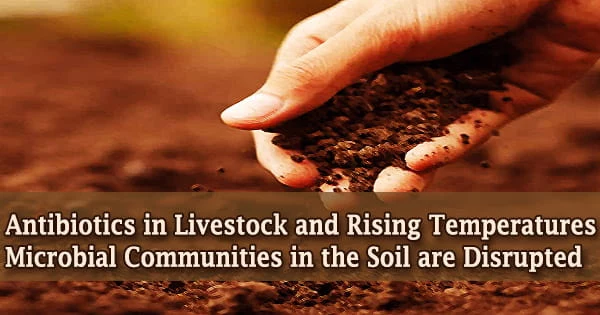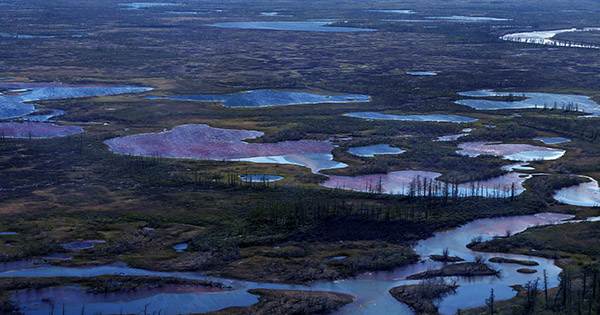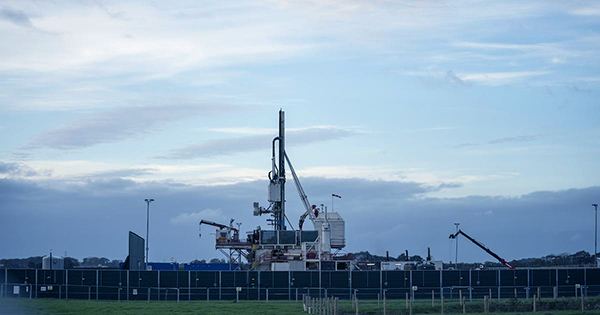Soils are home to a wide range of microbial communities that cycle nutrients, support agriculture, and trap carbon, all of which contribute to climate mitigation. Soils hold over 80% of the Earth’s terrestrial carbon reserves. This critical carbon sink is in jeopardy as a result of climate change and other human activities that influence soil microbes.
The impacts of rising temperatures and a popular livestock antibiotic on soil bacteria were explored in a recent study conducted by Jane Lucas, a community ecologist at Cary Institute of Ecosystem Studies.
Heat and antibiotics affect soil microbial populations, reducing soil microbe efficiency, resistance to future stress, and ability to store carbon, according to the researchers. The paper will be published in the December edition of Soil Biology and Biochemistry and is currently available online.
Lucas, says, “Most studies of soil health examine only one stressor at a time. Here, we wanted to explore the effects of warming temperatures and antibiotics simultaneously, to get a sense of how two increasing stressors impact soils.”
Monensin was chosen since it is a popular antibiotic that is becoming more widely used on cattle ranches. Monensin is a low-cost, simple-to-administer substance that doesn’t require a veterinary feed direction and isn’t utilized in human pharmaceuticals. Monensin, like many antibiotics, is poorly digested; when it enters the environment through animal excrement, much of the antibiotic is still biologically active.
The researchers took soil samples from conserved prairie habitat in northern Idaho that was devoid of grazing cattle. The vegetation at the collecting location, which is mostly tallgrass prairie, is typical animal pasture without the addition of cow manure.
Soil samples were given either a high, low or no dosage of the antibiotic before being heated at three different temperatures and incubated for 21 days. Seasonal fluctuation, as well as a future warming forecast, were reflected by the temperatures examined (15, 20, and 30°C).
We saw real changes in soil microbe communities in both the low and high-dose additions. Rising temperature exacerbated these antibiotic effects, with distinct microbial communities emerging at each temperature tested. Within these assemblages, we saw reduced diversity and fewer microorganisms overall. These changes could diminish soils’ resilience to future stress.
Jane Lucas
The researchers kept track of soil respiration, acidity, microbial community composition and function, carbon and nitrogen cycle, and microbe interactions for each treatment.
They discovered that when temperatures rose and antibiotics were added, bacteria dropped, allowing the fungus to take over and homogenize the environment, resulting in fewer total organisms and lower microbial diversity.
Antibiotics lowered microbial efficiency while increasing bioavailable carbon. Soil respiration and dissolved organic carbon increased as a result of rising temperatures alone. Increases in these labile carbon pools have the potential to reduce long-term carbon storage capability.
Lucas says, “We saw real changes in soil microbe communities in both the low and high-dose additions. Rising temperature exacerbated these antibiotic effects, with distinct microbial communities emerging at each temperature tested. Within these assemblages, we saw reduced diversity and fewer microorganisms overall. These changes could diminish soils’ resilience to future stress.”
“We also found that heat and antibiotics increased microbial respiration, decreasing efficiency. Essentially, microbes have to work harder to survive when they are in a hot, antibiotic-laden environment. This is similar to how it is easier to walk a mile when it is 70 degrees than it is to run a mile when it is 95 degrees. Decreased microbial efficiency can cause soils to store less carbon in the long term.”
As soil bacteria work harder (and inefficiently) to metabolize carbon, less of it is transformed into a stable organic form, which would otherwise end up stranded in the soil. Rather, more carbon dioxide is emitted as a gas into the environment. This impact might convert a significant carbon sink into a carbon source, worsening the consequences of climate change.
Senior author Michael Strickland, an Associate Professor at the University of Idaho’s Soil and Water Systems Department, says, “Forces of environmental change do not play out in isolation. Our results show that heat alone, antibiotics alone, and heat and antibiotics together all have different effects on soil microbial communities. These findings highlight the importance of testing multiple stressors simultaneously to more fully understand how our soils, and the essential functions they perform, are changing.”
Lucas concludes, “This project is in line with the ‘One Health’ philosophy. Agriculture, environmental protection, and public health are all intertwined. Understanding how different stresses influence soil bacteria is crucial for maintaining soil health in the face of global change. If we do not manage for interactive effects, things like soil carbon storage capacity and crop production could be jeopardized. In addition to broader climate mitigation efforts, limiting antibiotic inputs to the environment could help protect soils.”
















